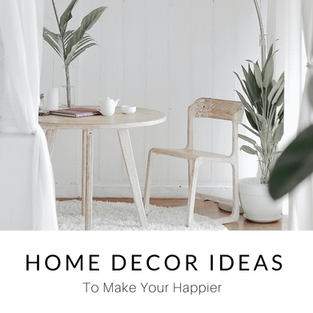Living rooms are vital spaces in our homes. This is where we spend time with our family, relax on the weekend, and escape everyday worries. Adding plants into your living room decor will naturally purify your air and evoke peaceful feelings. Do you need some ideas on how to incorporate plants into your living room? Here are some.
Idea 1: Cluster Plants Together in the Living Room
Clustering plants is a simple idea that boosts the aesthetic of your living room. You create a cluster by grouping three or more plants. Together, these plants generate a micro-climate, which is beneficial for a few reasons: first, this will boost air purification. Second, the plants will support each other's healthy growth by providing humidity.
How to Cluster:
1. Select the area
Carefully choosing the location will ensure that your plants are a decor choice, not an afterthought. You will have more plant options if you select an area that receives direct or indirect light. The size of the space determines how many plants you will include in your grouping.
The ideas for locations to cluster plants in your living room are endless, but a few include a bookshelf, mantle, coffee table, side table, entertainment center, or an empty corner/wall space.
2. Analyze the Environment
Think about the location you have chosen for your plants. Closely observe the area throughout the day. You may be surprised how the light travels around your space. Once you understand the environment, you will be able to choose appropriate plants.
3. Choose Different Plant Heights
Taller plants can be used as the cluster’s centerpiece, anchoring the rest of the plants in the décor. Picking one or more plants from each of the below categories will make an interesting and cohesive cluster. Remember, the below list is not exhaustive, and a plant’s maturity is another factor to consider for height.
● Tall: Hawaiian Palm, Fiddle Leaf Fig, Dracaena, Parlor Palm, ZZ Plant, Snake Plant.
● Medium: Crispy Wave, Pilea Peperomioides, Spider Plant, Chinese Evergreen, Christmas Cactus.
● Short/Trailing: Tradesantia Bubblegum/Lilac, Pothos, Heart-Shaped Philodendron, Mini Cacti.
4. Vary plant Shape, Texture, Pattern, Color, and Flower
Plants come in a wide variety. Mixing height with the below categories will add vibrancy to any space. Below are some plant ideas for incorporating height with texture, pattern, and color in your living room.
● Shapes: Hawaiian Palm, Pilea Peperomioides, Philodendron Hope, String of Hearts.
● Texture: Crispy Wave, Variegated Spider Plant, Moon Valley Pilea, African Mask Alocasia.
● Pattern: Maranta Prayer Plant, Pothos Snow Queen, Croton, Nerve Plant, Watermelon Peperomia.
● Color: Tradescantia Bubblegum/Lilac, Rose Painted Calathea, Orange Prince Philodendron, Black Cardinal Philodendron.
● Flowering: Hawaiian Palm, African Violet, Anthurium, Christmas & Easter Cactus, Cyclamen.
5. Choosing Pots: Ensure that your container selection is cohesive and will match the rest of your decorations. Putting your plants in plastic planters and placing them in decorative ceramic cover pots can be a useful idea when deciding on your living room's style. It will also make it easier to swap out plants without changing the cluster’s overall look.
6. Putting it Together
Once you've selected the heights and varieties for your living room plant cluster, you can bring your idea to life! Think of basic placement as “a group hug”: place your tallest plant in the center and gather the shorter plants around it. Take a few steps back and make adjustments accordingly. Feel free to add other objects into your cluster: perhaps a framed photograph of your family or a meaningful knickknack. Be creative and make it your own!
Idea 2: Create a Living Focal Point
If you have a large space or minimal furniture, using plants as a focal point can be an especially good idea for your living room. Plants create visual interest, and large ones can instantly fill in a bare corner. In this instance, less is more. Choose one plant that perfectly fits the location.
If you are planning to purchase an extra-large plant for a focal area, you must understand the conditions. You can easily swap clustered plants with other spaces, but a focal point needs to stay in place. Observe the environment and do extensive research before you buy. In this case, you only have one chance to get it right.
Not all focal points are enormous, however. Placing a single plant on a side table or next to a family photo can be a great idea to make the living room feel complete. If you need a small focal point, you should select a slow-growing plant. Otherwise, your plant will quickly outgrow its location! Crispy Wave ferns make great focal points because they take years to mature to full-size.
Idea 3: Strategic Plant Placement
Electrical cords, plugs, shelves with DVDs, the list could continue. If you are looking for ideas on how to hide unsightly areas of your living room, plants can help.
For instance, draping trailing plants over the side of an entertainment center will hide tangled cords.
Plants are living decorations that purify the air. The perfect plants for your living room depend on your home's lighting, space, and environment. Once you consider those variables, there is tremendous creative freedom!
Remember, however, this “decoration” requires routine attention. It may be wise to purchase a mix of high-maintenance and low-maintenance plants to avoid being overwhelmed with their care.
For instance, succulents require less watering, such as the Hawaiian Palm or Tradescantia. Other plants have more strenuous watering and humidity needs, such as the Crispy Wave fern.
By mixing them, you will have attractive, easy-to-care-for living room decor that will make you happy and healthy for years to come!
Read More
.png)
.png)







Comments